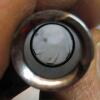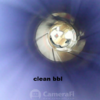JimGnitecki
Member
- Joined
- Mar 28, 2010
- Messages
- 1,258
Then with the excluded groups you knew the moment a shot broke that it was bad because the sights were misaligned, correct?
Or was your approach: this group is big I must have screwed up?
Combination. If you think about it, you will see why:
If the group is larger because I screwed up, it does not tell us anything useful about that variant of the ammunition being tested.
If the group is larger purely because of that variant of the ammunition, then we don't need to further analyze that variant of the ammunition because its inferior group size compared to others tells us it is clearly not the best variant to test and pursue further. (Since targets with other variants already have better groups)
Sometimes, it IS hard to figure out which (me or the ammo) caused the larger group, but there are some clues that help, including some I got within the past few days from Michael Ransom at Ransom Rests via literally MANY pages of text on how to "do it right" and to how to KNOW when you are doing it right.
What Michael told me, maybe somewhat simplified, basically boils down to: IF it is purely a combination of decent ammunition, decent firearm, and decent firing point stability that has shot a Ransom Rest group, the distribution of the individual holes in the target should be fairly evenly spread around an axis. i.e. A true random dispersion with no centerpoint deviation or non-symmetric shapes.
If the overall shape or concentration of holes differs from that, you have one or multiple uncontrolled ammunition, firearm, or user variables.
That leaves a LOT of potential variables to identify and analyze!
No, I am NOT using a Ransom Rest as the Canadian cost for a fully equipped rest with recommended accessories is over $1000 plus the costs and time of COVID era shipping, plus 12% Canadian sales tax and any duties, and still requires range benches with very specific standards of stability AND stiffness that would surprise most people.
Michael says that I can get pretty consistent results IF I build a proper LARGE and thick wooden base myself to fasten the Ransom Rest to (versus his 30 lb solid steel plate offering), and then clamp that setup to the shooting bench with at least 3 clamps on at least 2 sides, and iF the outdoor range's shooting benches are stiff enough without needing to be reinforced with tension straps to nearby objects (no kidding), but the cost would still be north of $750 Canadian plus shipping and taxes.
It would also not have any provisions for windage changes without stepping downrange instead to change targets manually after each group, which is difficult to do when many other shooters are using the range at the same time and you irritate them with multiple calls for cease fires. Those Youtube videos you can see where the user has simply clamped the Ransom Rest by itself to a shooting table and Tested his firearm and/or ammunition without any further provisions have NOT really tested his firearm and/or ammunition.
Jim G









